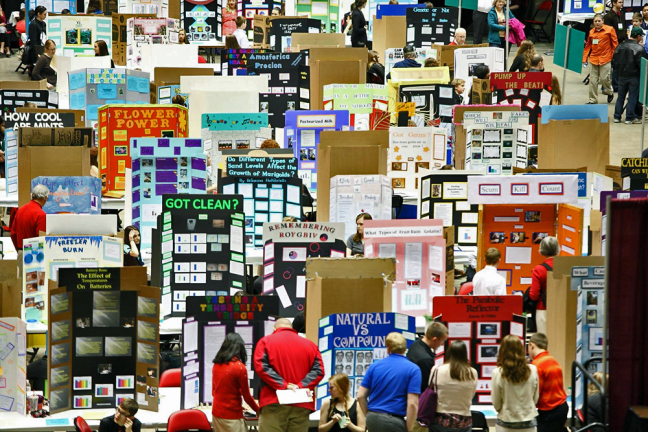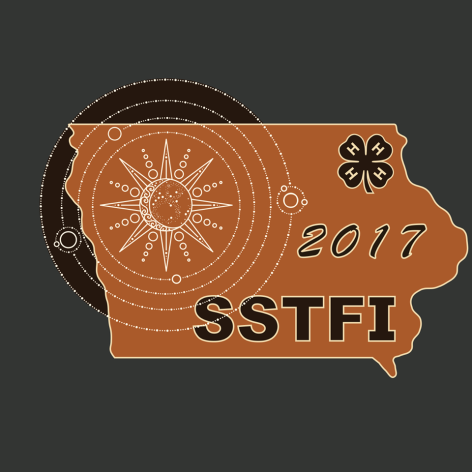
The State Science & Technology Fair of Iowa fills the floor of Hilton Coliseum with research projects from across the state. Larger photo. Photo contributed by the State Science & Technology Fair of Iowa.
AMES, Iowa – It’s a busy week for science students across the state.
Nearly 700 students from 71 of Iowa’s junior highs and high schools will be focusing critical eyes on their data, their conclusions and their exhibits. Then, on Thursday and Friday at the State Science & Technology Fair of Iowa inside Iowa State University’s Hilton Coliseum, they’ll present their findings to judges and the public.
The fair is free and visitors are invited to look over exhibits and talk to students. Public viewing times are 2 to 6 p.m. Thursday, March 30, for high school projects and 9 a.m. to 6 p.m. Friday, March 31, for junior high and the best high school projects.
This is the 60th anniversary of the fair and organizers say it’s as relevant as ever.
“Part of the foundation of next-generation science standards is kids doing real science and engineering,” said Jay Staker of Iowa State Extension and Outreach and chairman of the fair’s board. “We give teachers and mentors a place to do that and do it safely. We want to help our education community accomplish that huge undertaking.”
The fair’s history at Iowa State goes back to 1995 when the late Harold “Sande” McNabb, a former university professor of plant pathology and forestry, worked with former President Martin Jischke to bring the struggling fair to campus.
Now, Staker said the fair is about as big as it can be. Two years ago, the fair split into two days, one for junior high students and one for high school students. And there’s still barely enough room for all the students and their projects.
Part of the attraction is major prizes, including trips to the Intel International Science and Engineering Fair in Los Angeles this May as well as scholarships and awards worth about $50,000.
The big goals for the 60th version of the fair?
“I would just hope the students develop an appreciation and a love of science, especially research,” said Andrea Spencer, the fair’s manager. “I also want to see them develop the ability to problem-solve effectively – that’s something they can carry with them throughout their lives.”
